The company had so far raised a staggering amount of almost $150 million from some of Asia's renowned financial investors under a stealth mode. This sort of investment should be expected, given that the Taiwanese startup has a workforce that is led by big names such as Horace Luke, Founder and CEO of Gogoro, former Chief Innovation Officer at HTC, one of the main men behind the global transcendence of the HTC brand from a hardware manufacturer to a reputed and globally acclaimed mobile phone maker. Matt Taylor is another name on the list, he is the co-founder and Chief Technology Officer at Gogoro. Experienced along the same lines as his counterpart, Horace, Matt was Chief Technologist at HTC and had worked at Microsoft and Motorola before entering the mobile phone giant.
Smartscooter: Faster, Smarter and Easier
The smartscooter is the company's flagship model and it is already turning a lot of heads in the 2-wheeler segment. Gogoro wanted to design something that made things easier in life for its customers. The smartscooter was the final idea. Just like the name itself, this seemingly innocent looking scooter does pack a punch and might perhaps outrun the normal petrol-powered scooters that rules the streets today. The entire frame has been inspired from aircraft structures and uses an all aluminium structure to make it extra light and extra fast.

The structure is then reinforced using a high tech but clever method of locking the reinforcements into place. The Aeroframe Monocoque Chassis highly resembles that of the most famous supercars that are blisteringly quick. Suspension at the front is inspired from that of a nose landing gear of an aircraft, using almost the same design techniques on the smartscooter. At the back sits a four point suspension that was taken from the cars that were developed for the race track, highly responsive and yet incredibly resilient. The whole structure underwent aerodynamic testing via software to arrive at the best possible design solution that helped reduce drag and increase efficiency. The scooter is incredibly agile and can bank at higher angles because it does carry any engine components underneath.

Another interesting feature of this scooter is that it can wade through almost 30cm of water. Most of the conventional scooters would stall when it hits a flooded road due to the lowered placement of the engine and the exhaust module. The smartscooter has an engine powered by batteries and emits nothing. Environmentalists, here's your saviour. Talking of the engine, the engineers at Gogoro designed and engineered it to make it save on space but also provide adequate power without losing out on mileage. The combination to be achieved was incredibly difficult, however, with the incredible solutions provided by the in-house engineers, the Gogoro team came up with the drive-train that is digitally controlled.

What makes this engine unique is that it stays cool even under constant load. The main idea was to make the engine cool enough so that power delivery is smoother. The engine and its power delivery is monitored round-the-clock and manages to deliver energy at 98% efficiency. Powering the wheels is a G1 motor, a completely redesigned and re-engineered motor that houses the best in electric engineering. An integrated planetary gear transfers the power from the motor to the wheels via a belt drive. This is no ordinary belt drive though, made of racing-grade carbon composites, supplied by Gates, makes sure that the torque from the innocent yet sinister looking motor is fully delivered to the rear wheel. On contact with the road are hybrid-racing tires that is crafted to provide the required traction, whatever the angle. Gogoro claims that their scooter can reach up to 95km/h and can do 0-50 in 4.2s. Torque from the motor is felt almost instantly unlike the scooters of today, which needs to rev up to a specific RPM to get the torque rolling.

Being an electric scooter, batteries will always be a challenge. Gogoro has flipped that notion, almost completely. The engine gets its juice from Panasonic designed battery packs that are stored underneath the seat. Unlike most of the electric scooters that are available in the market, these battery packs can be easily removed from the scooter and recharged at a power station within a short period of time.

All of the processes of the scooter are managed digitally and takes into account the riding pattern of the user and makes adjustments wherever required to give the user the ultimate experience using the Smart Mode. Using a mobile app developed by Gogoro themselves, the Electric Scooter can be customized by downloading from a number of customization options available.

The app also provides information regarding the nearest recharge stations (GoStations) and maintenance alerts. All in all, the scooter has been thought out as an interactive tool that not only acts as a transporter but one that provides an incredible user-machine relationship experience, whilst saving the environment. The design of the scooter has largely taken a minimalist path, the LED lights almost looking like the ones from the light cycle in the Tron movie. The lights themselves are also smart, lighting up and dimming down, as required.

As of now, the Gogoro Smartscooter is doing its pilot run in Taiwan. To pre-order one of these in Taiwan, it costs almost four thousand dollars. Subsidies are under consideration by the government and the scooter is already attracting a lot of interest from expanding markets such as Brazil, India, China and Thailand. The major issue that Gogoro will be up against, in case they do intend to expand to these markets, is the price. Hero, the Indian motorcycle manufacturing giant, sells electric scooters at $300 dollars, an outrageously cheap price compared to the Gogoro, currently. There is still a long way to go for the company but it remains keen on developing products, like the smartscooter, to the people.


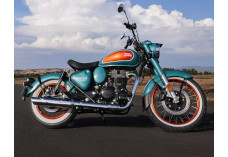
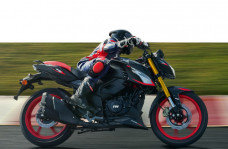




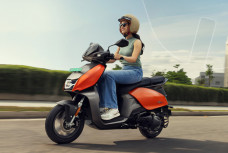
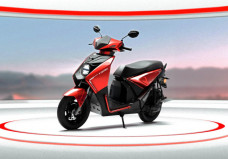
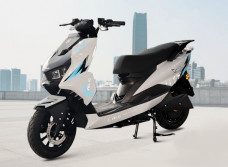
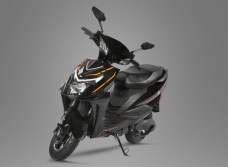

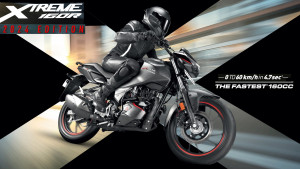 What Makes the 2024 Hero Xtreme 160R 2V a Perfect Daily Commuter?
What Makes the 2024 Hero Xtreme 160R 2V a Perfect Daily Commuter?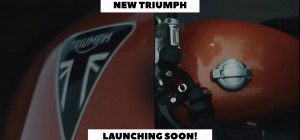 Triumph Teases New Speed 400-Based Motorcycle Set for September 17 Launch
Triumph Teases New Speed 400-Based Motorcycle Set for September 17 Launch Hero Xtreme 160R 2V 2024 Edition Launched at Rs 1,11,111. Check Out the New Features
Hero Xtreme 160R 2V 2024 Edition Launched at Rs 1,11,111. Check Out the New Features